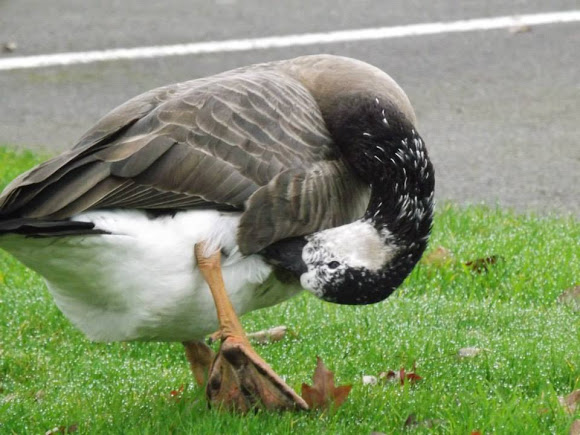
Swoose
“Researchers have discovered that two hawks from surprisingly distant perches on the tree of life have mated, resulting in rare hybrid chicks.
In 2005, Stan Moore, a master raptor bander at Fairfax Raptor Research, spotted something peculiar in the Laguna de Santa Rosa Wetlands Complex in Sonoma County, California. It was a common black hawk (Buteogallus anthracinus), a bird of prey definitely not known to inhabit coastal California. Normally, the species stayed close to river systems throughout Central and South America, only barely reaching up into the interior of the American Southwest. The nearest breeding population was in southeastern Nevada, hundreds of miles away.
But, according to a new study published in the Journal of Raptor Research by Moore and Coulson, after years of unrequited courting, someone finally swiped right. In 2012, a bird watcher spotted what appeared to be a hybrid juvenile hawk following the common black hawk. In 2013 and 2014, the common black hawk was seen fraternizing with a red-shouldered hawk, and later on, the two were recorded mating and tending to a nest. In the spring of 2014, Moore spotted their hybrid nestling.” From Gizmodo.
The Red-shouldered Hawk’s scientific name is Buteo lineatus. The birds are different species, which is a group of organisms capable of exchanging genes or interbreeding. The species is the basic natural taxonomic unit which taxonomy has used for many years. Simply put, different species cannot interbreed. They may differ in mating habits, physical attributes, genetic differences, seasonality, or just not occur in the same area. And if for some reason they do interbreed, the offspring are sterile. Mules, for example, are sterile offspring of a donkey and a horse; a liger is the sterile result of a lion and tiger interbreeding. Interesting enough, but donkeys and horses are both of the Equus genus and lions and tigers are both Panthera. And Northern Pintails and Mallards cross as they are both in the genus Anas. In fact, Mallards are known to mate and produce hybrid offspring with 40 other species. And according to some estimates, about 16% of all wild bird species are known to hybridize with other bird species. There is all kinds of information on the Bird Hybrids Project website.
It gets stranger. There is even a triple hybrid warbler, including a parent bird of another genus. It’s called a Burket’s Warbler. Here’s an entirewebsite devoted to the bird.
When a swan and a goose cross, their offspring is called a swoose. The known goose-swan pairings, in nature and captivity, include a mute swan and domestic goose, and a Black Australian Swan and Canada Goose. Their offspring are thought to rarely survive past fledging.
This is all to say that the species concept is a loose one. It used to be thought that species were well defined and that different species did not interbreed. New techniques in DNA analyses. There is a very good explanation and discussion of genome mapping at the Cornell Lab website, so I’m not going to try to explain it here. I will say though, the more we know about genetics, the less clear and the more clear bird relationships become. Stay tuned.